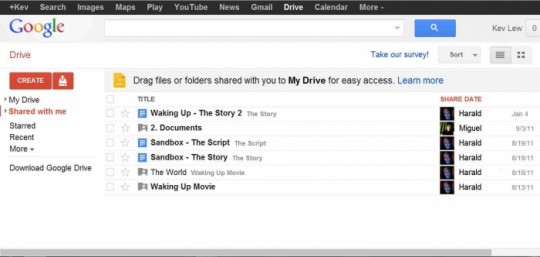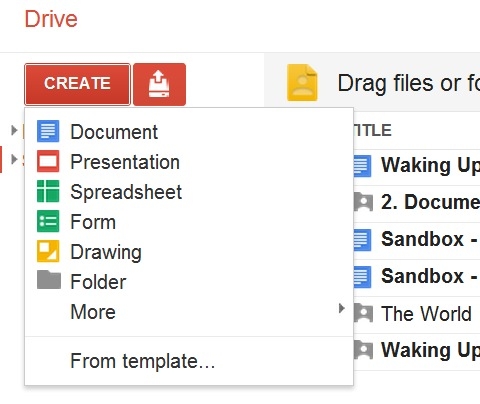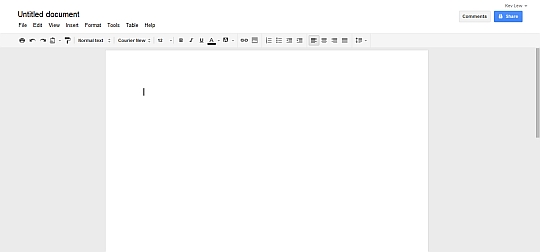Once you have Google Drive setup, visit your personal homepage by visiting drive.google.com. The right pane will list all of your documents; the left pane is for navigating. View it now if you haven't already.
Click "Document" under "Create" to create a new document. You will be taken to a new tab with a blank page on it. This is the document editor.
You can review previous edits by selecting "See revision history" from the file menu or by hitting Ctrl Alt G.
It is helpful to create folders to organize your files, and Drive lets you do this from its own page. Click Create again and this time click New Folder. The folder will appear alongside the left pane. Give it a name. Drag and drop the recently created file from the home page to the folder to store it there. You can color code your folders for better distinction. Documents and folders can also be starred so they can be accessed from the "Starred" folder in the left pane.
If you have Drive for a mobile device, as of this writing you cannot create folders, and the document editor is essentially broken--but you can still access and edit the documents you stored in the cloud and vice-versa, including the folders.
Next we will explore some features of Google Docs.


Click "Document" under "Create" to create a new document. You will be taken to a new tab with a blank page on it. This is the document editor.

You can review previous edits by selecting "See revision history" from the file menu or by hitting Ctrl Alt G.
It is helpful to create folders to organize your files, and Drive lets you do this from its own page. Click Create again and this time click New Folder. The folder will appear alongside the left pane. Give it a name. Drag and drop the recently created file from the home page to the folder to store it there. You can color code your folders for better distinction. Documents and folders can also be starred so they can be accessed from the "Starred" folder in the left pane.
If you have Drive for a mobile device, as of this writing you cannot create folders, and the document editor is essentially broken--but you can still access and edit the documents you stored in the cloud and vice-versa, including the folders.
Next we will explore some features of Google Docs.
Join the Discussion
Write something…
I tried this using Chrome and I now can see the tutorial. It is not visible in IE9 and I cannot comment using Chrome (in Chrome every action prompts me to create an account including the logout icon) ... Maybe IE9 is designed to block content that mentions MS Office and Google Docs on the same page :)
I cannot see the tutorial. There is a heading "Using Google Docs" but no information. Do I have to follow members to see their tutorials?
Meredithlonestar
Premium
Good Tutorial, I appreciate it. I've never used google docs and I know I should be. Your information will be a big help!








